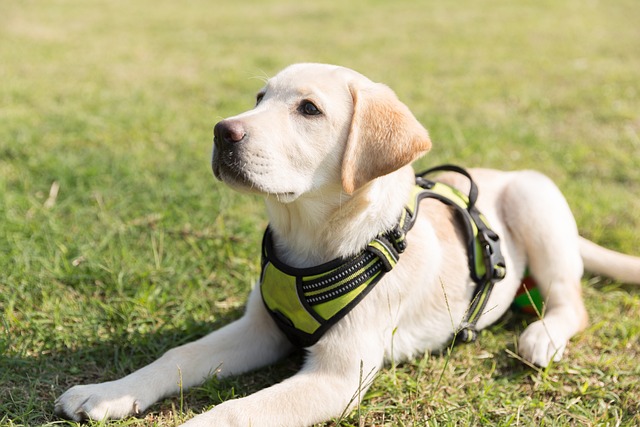
How can I tell if my dog's heatstroke is serious
Let’s be real: It’s a sticky August morning in Los Angeles, and you took your 2-year-old Golden Retriever, Max, for a walk a little later than usual
On sunny days, taking your dog for a walk outside is a joyful time shared by many owners and dogs. At this point, the dog leash has become an important link between the owner and the dog. Among various types of dog ropes, retractable dog ropes are favored by many owners due to their convenience. But for dogs who love to pull ropes, is a retractable dog rope really suitable and will it cause harm to them? This issue deserves careful consideration by every dog lover.
Dogs love to pull ropes for various reasons. From an instinctive perspective, dogs, as natural explorers, are full of curiosity about the world around them. When they see something novel, such as a bird flying by, a cat running by, or smell something interesting, they instinctively want to rush over and explore, so they pull the rope hard and charge forward. Especially for some breeds of hunting dogs, their hunting nature makes this desire to explore even stronger, and their behavior of pulling ropes is more frequent and forceful.
After understanding the reasons why dogs love to pull ropes, let's explore the characteristics of retractable dog ropes. A retractable dog leash usually consists of a handle and a stretchable nylon or steel wire rope. The rope can be freely extended and retracted according to the dog's range of motion, and the owner can control the length of the rope through buttons on the handle. At first glance, this design seems to give dogs more freedom of movement, allowing them to explore freely within a certain range. However, for dogs who love to pull ropes, there are many potential risks hidden within it.
In terms of physical injury, when a dog suddenly pulls the rope forcefully, the rope of the retractable dog leash will quickly stretch. Due to its fast expansion and contraction speed, if a dog suddenly stops or changes direction during running, the rope may whip the dog's body like a whip, causing abrasions, strangulation, and other external injuries. Especially the sensitive parts of dogs, such as legs and abdomen, are more susceptible to injury.
Long term use of retractable dog leash may also cause chronic damage to the dog's joints. Dogs who love to pull ropes often experience significant impact on their bodies, which can put extra strain on their joints. Taking the hip and knee joints as an example, when a dog forcefully pulls a rope, the leg joints need to bear the weight of the body and the force generated by the pulling. Over time, this may lead to indog leashcreased joint wear and tear, increasing the risk of joint diseases such as arthritis. For some dog breeds with inherent joint genetic problems, such as Labrador Retrievers, German Shepherds, etc., this injury may be more pronounced. Imagine a scene where a lively and active dog gradually becomes sluggish due to joint pain, and can no longer run and play happily. What a heartbreaking sight.

From the perspective of behavioral training, a retractable dog leash is not conducive to correcting the bad behavior of dogs who love to pull the leash. When a dog pulls the rope forcefully, the retractable dog rope will stretch out with the dog's pull, which to some extent gives the dog a "reward" and makes them mistakenly believe that this pulling behavior is allowed. Over time, dogs will develop habits and their behavior of pulling ropes will become increasingly severe. On the contrary, by using a fixed length dog leash, when the dog pulls the leash, the owner can provide timely feedback. Through appropriate training methods such as stopping and scolding softly, the dog can understand that pulling the leash is incorrect behavior and gradually correct this habit.
In addition, the retractable dog leash also poses safety hazards during use. In densely populated areas, if a dog suddenly pulls a rope and rushes out, it may collide with pedestrians and cause accidents. Moreover, due to the stretchable nature of the rope, the owner's control over the dog is relatively weak. Once the dog breaks free from the rope, it may run onto the road and face the risk of being hit by a vehicle.
So, for dogs who love to pull ropes, how should owners choose suitable ropes and train them? Firstly, it is recommended to choose a fixed length dog leash, such as one made of nylon material, which is soft, sturdy, and durable. When training a dog, if the dog pulls on the rope, the owner should respond promptly. You can use the method of "stopping moving forward". When the dog pulls the rope, immediately stop and wait for the dog to calm down and stop pulling the rope before continuing to move forward. At the same time, with gentle commands such as "walk slowly" and "stop", the dog gradually understands its owner's intention. In addition, increasing the amount of exercise for dogs can also help reduce their rope pulling behavior caused by excessive energy. Take your dog for a moderate walk and play every day, allowing them to fully release their energy. This way, when going out for a walk, your dog will be quieter and more obedient.
The retractable dog leash poses many potential hazards for dogs who love to pull ropes, and is not the best choice from the perspectives of physical injury, joint health, behavioral training, and safety. As owners of dogs, we bear the responsibility of protecting their health and safety. When choosing a dog leash, it is important to fully consider the behavioral characteristics of dogs, select appropriate equipment for them, and use scientific training methods to help dogs develop good behavioral habits. Because dogs give us unconditional love and loyalty, we should also do our best to protect their happy lives with love and care, making every walk outside a warm and beautiful memory.

Let’s be real: It’s a sticky August morning in Los Angeles, and you took your 2-year-old Golden Retriever, Max, for a walk a little later than usual

You're enjoying a summer afternoon at the park when you notice your dog has stopped panting and appears disoriented - their gums are bright red

Let’s paint the picture: You’re in your Denver apartment, watching your 4-year-old Boston Terrier, Ruby, plop down mid-play session with her favorite toy

Many dog owners notice their pets nails seem shorter after regular walks,but how much does this daily activity actually help?The answer depends on where you walk—concrete sidewalks or asphalt streets gently file nails as a dog's paws hit the ground

Most dog owners notice their pup scooting across the carpet at some point, but few connect it to impacted anal glands. These small sacs near a dog’s rectum secrete a scent for marking territory

Most vets agree that regular dog teeth cleaning is key to avoiding painful dental issues later. For healthy adult dogs, a professional cleaning at the vet’s office every 12 to 18 months usually works well.